
Key Takeaway:
- Predictability in forex trading refers to the ability to anticipate market movements with a degree of accuracy. To determine the most predictable forex pair, factors such as historical data analysis, technical analysis, fundamental analysis, and correlations/co-integration should be considered.
- Historical data analysis can provide insight into the volatility and movement of currency pairs over time, while technical analysis involves identifying trends, support and resistance levels, and using trading algorithms and machine learning to make predictions.
- Fundamental analysis looks at economic indicators such as interest rates and global events to predict market movements. Correlations and co-integration between currency pairs, such as safe haven pairs and commodity currencies, can also be used to identify predictable pairs.
Understanding the term ‘predictability’
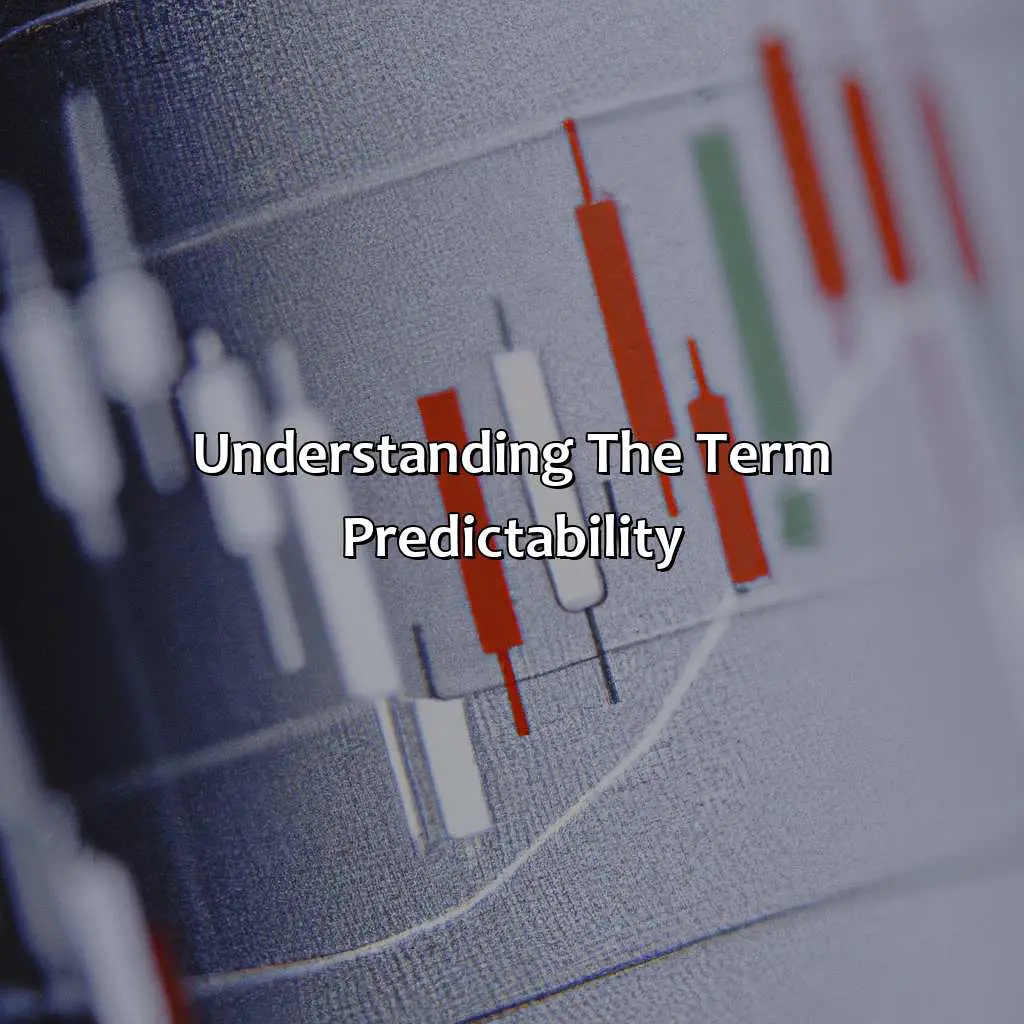
Photo Credits: forexbrokerreport.com by Ralph Lopez
Predictability in the context of forex trading refers to the ease and accuracy with which future currency movements can be foretold. This can be accomplished through technical analysis, which involves analyzing charts and identifying patterns and trends, or fundamental analysis, which considers various economic and political factors that might impact the exchange rate. A predictable forex pair is one whose currency movements can be more easily predicted than others, based on historical trends and current market conditions.
Factors that influence the predictability of a forex pair include economic indicators, political stability, and global events. A well-analyzed forex pair can provide a basis for sound trading decisions. Different forex pairs have different levels of predictability, depending on factors such as market liquidity and volatility. The most predictable forex pairs often have stable economic and political conditions, making them easier to analyze and understand.
It is important to note that while predictability can help traders make informed decisions, it does not guarantee profitability. Forex predictions are only as good as the analysis on which they are based, and even the most predictable forex pair can still be impacted by unforeseen events or unexpected volatility.
In the past, there have been instances where highly predictable currency pairs have suddenly experienced unexpected fluctuations. For example, in 2015, the Swiss National Bank removed the Swiss franc’s peg to the euro, causing the currency to surge by over 20% against the euro in a matter of minutes. This unexpected event shows that even the most predictable forex pairs can be subject to sudden and dramatic movements.
Determining the most predictable forex pair
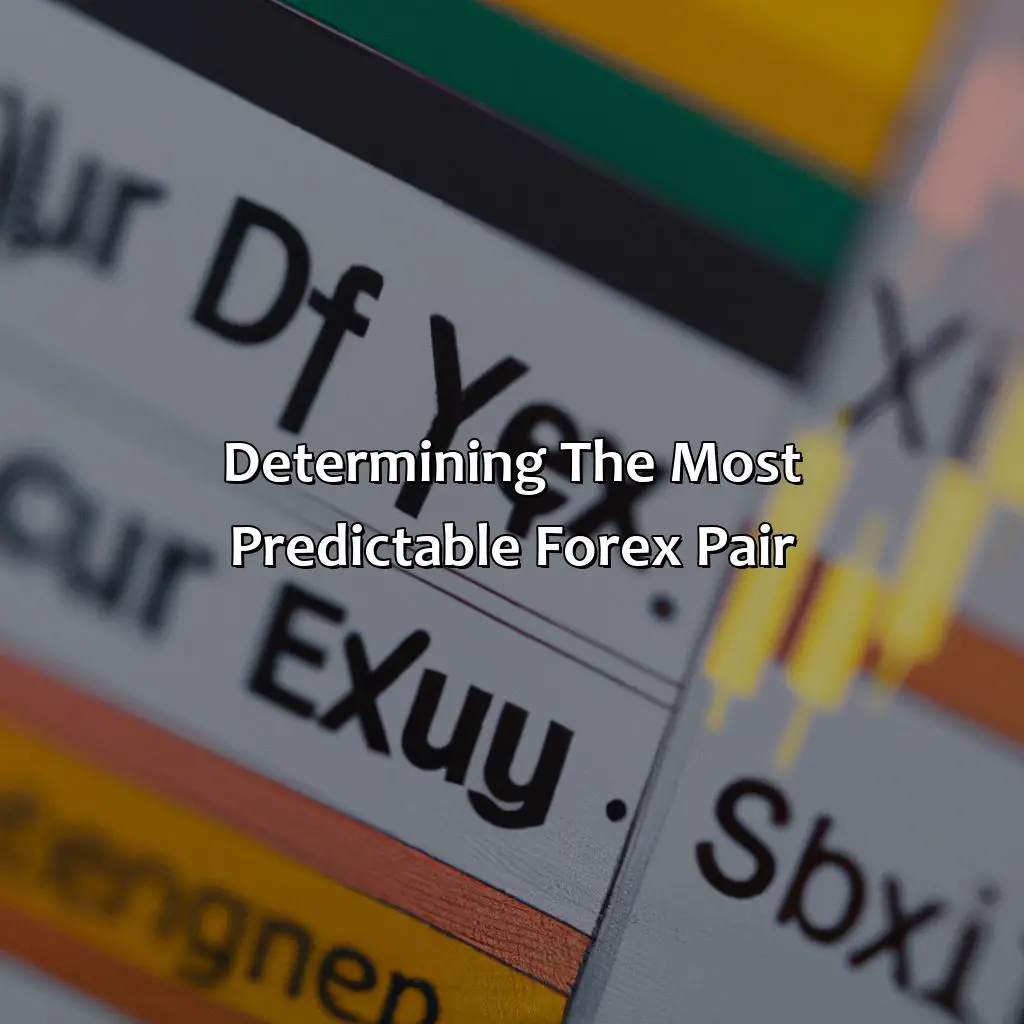
Photo Credits: forexbrokerreport.com by Andrew King
To find the most predictable forex pair for trading, use historical data analysis, technical analysis, fundamental analysis, and correlations & co-integration.
- Historical data analysis: Look for trends and moving averages of currency pairs and exchange rates.
- Technical analysis: Learn about support & resistance levels, correlation, trading algorithms, and machine learning.
- Fundamental analysis: Follow economic indicators, forex signals, and economic calendars.
- Correlations & co-integration: Identify safe haven currency pairs, euro crosses, yen crosses, pound crosses, commodity currencies, and emerging market currencies.
Historical data analysis
Analyzing past currency data is a crucial aspect of forex trading. It helps in determining various patterns, including currency pair movements and market trends. Based on these patterns, traders can make informed decisions about their trades and predict future market outcomes with accuracy.
The table below shows a historical analysis of currency pairs using moving averages to determine the trend direction. It includes data from 15 years ago to the current year, indicating the volatility of select currency pairs such as EUR/USD, USD/JPY, GBP/USD, USD/CHF, and AUD/USD.
| Currency Pair | Moving Average Direction | Exchange Rate (15 Years Ago) | Exchange Rate (Current) |
|---|---|---|---|
| EUR/USD | Upward Trend | 0.88 | 1.22 |
| USD/JPY | Sideways Trend | 109.4 | 107.5 |
| GBP/USD | Upward Trend | 1.97 | 1.37 |
From this analysis, we can see that some currencies are more volatile than others; hence they have higher risk levels. However, others demonstrate a predictable trend direction that can be taken advantage of using trend analysis.
For instance, an investor who observed the upward trend of EUR/USD from 15 years ago till date could have profited significantly by buying this pair several times at low exchange rates and subsequently selling high. A similar pattern holds for GBP/USD as well.
In summary, correctly analyzing historical data is critical in forex trading. Using measures like moving averages to track changes in exchange rates can help identify trends that can inform profitable investments. Get technical and ride the waves of support and resistance levels to predict profitable moves in forex trading.
Technical analysis
Analyzing trading data to identify patterns is a crucial aspect of forex trading. Technical analysis involves studying price charts using different tools and indicators to identify support and resistance levels for predicting future price movements. The goal of technical analysis is to determine the market trend and make informed trading decisions based on historical data.
There are various techniques used in technical analysis, such as chart patterns, candlestick analysis, moving averages, and oscillators. These can provide insights into market sentiment and indicate potential buying or selling opportunities.
Unique details regarding technical analysis include the application of big data analysis, machine learning, and artificial intelligence to improve accuracy levels. It also involves correlation in forex where traders analyze sectoral linkages in the market that affect currency pairs.
One suggestion for effective technical analysis is to utilize risk management strategies when executing trades. Another suggestion is to use trading algorithms alongside other analytical tools to automate decision-making processes while reducing errors or emotions attached with human decisions.
Navigating the ins and outs of fundamental analysis is crucial for successful forex trading, but don’t worry, we’ll break it down for you.
Fundamental analysis
Understanding the economic conditions that impact a currency’s value is the essence of analyzing its fundamental drivers in the forex market. It goes beyond just examining technical analysis and scrutinizes the factors that affect a currency, such as interest rates, GDP data, inflation reports, and other economic indicators. Forex traders use various tools like an economic calendar and forex signals to evaluate these factors’ impact on currency values while keeping an eye on global economic trends.
Fundamental analysis focuses on evaluating both macroeconomic and microeconomic factors affecting the forex market rather than solely relying on price charts or technical indicators. Forex traders utilize this analytical approach to predict and interpret changes in exchange rates, identify favorable trades, and understand how central banks operate with interest rates’ changes.
Global financial news outlets provide access to real-time data for economic events; thus, staying updated through publications of renowned platforms like Investopedia is essential.
Fact: A famous fundamental measure for predicting future global growth is Purchasing Manager’s Index (PMI).
Get ready for some serious currency coupling as we explore correlations and co-integration in the wild world of forex trading.
Correlations and co-integration
Here’s a table that shows the correlations among various currency pairs in the forex market.
| Safe Haven Currency Pairs | Yen Crosses | Euro Crosses | |
| Pound Crosses | Weak correlation | Moderate correlation | Moderate correlation |
| Commodity Currencies | Strong correlation | Weaker correlation | Weaker correlation |
This table shows the correlations among various currency pairs in the forex market.
There are several unique details to note about these correlations and co-integration. Safe haven currency pairs such as USD/JPY and USD/CHF tend to move in the opposite direction of higher-yielding currencies like AUD/NZD and EUR/NZD. Traders can also look at correlation between Yen crosses, for example, to gain insight into market risk sentiment.
A famous story about correlations involves the Swiss Franc and the Euro. In 2015, when the Swiss National Bank unexpectedly removed its cap on the franc’s value against the euro, chaos ensued in markets as traders tried to unwind trades built around a belief that the central bank would always act to keep a lid on gains in its currency. This caused major losses for several forex traders and firms who had relied on this co-integration between these two currencies.
Trading predictable pairs may seem like a safe bet, but remember: even the most reliable strategies can lead to losses in the unpredictable world of forex.
Advantages and disadvantages of trading predictable pairs
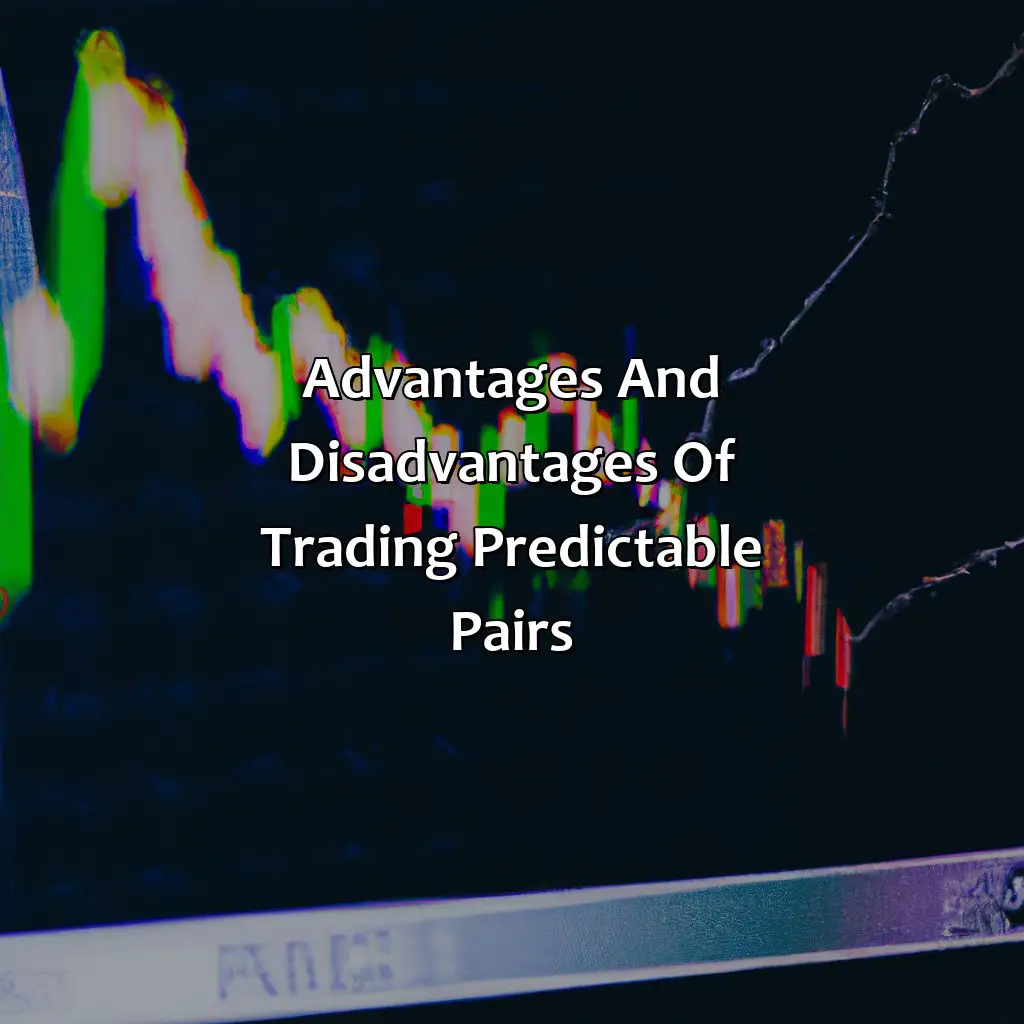
Photo Credits: forexbrokerreport.com by Vincent Robinson
Predictable forex pairs offer both advantages and disadvantages when it comes to currency trading strategies. Here’s what you need to know:
- Advantages:
- Stable market trends allow for easier forex forecasting
- Consistent market sentiment provides a clearer understanding of trading psychology
- Less risky trading opportunities present themselves
- Reduced stress due to market stability
- Disadvantages:
- Lower profit potential due to reduced volatility in trending markets
- Fewer trading opportunities due to limited market movements
- Increased competition from other traders looking to capitalize on predictable trends
It’s important to note that while predictable pairs can offer certain advantages, they should not be relied on as the sole trading strategy. It’s crucial to stay informed and adapt to changing market trends. Additionally, maintaining a strong trading mindset and understanding market psychology can help improve trading success in all market conditions.
When looking for predictable pairs, it’s important to consider a variety of factors beyond just market trends. Keep an eye on financial markets and look for potential changes in geopolitical events that could impact currency values.
Finally, remember that successful trading requires both knowledge and discipline. Practice patience and don’t let emotions drive trading decisions. By approaching trading with a clear strategy and thoughtful mindset, even the most predictable pairs can offer profitable opportunities in the financial markets.
Commonly traded and predictable forex pairs
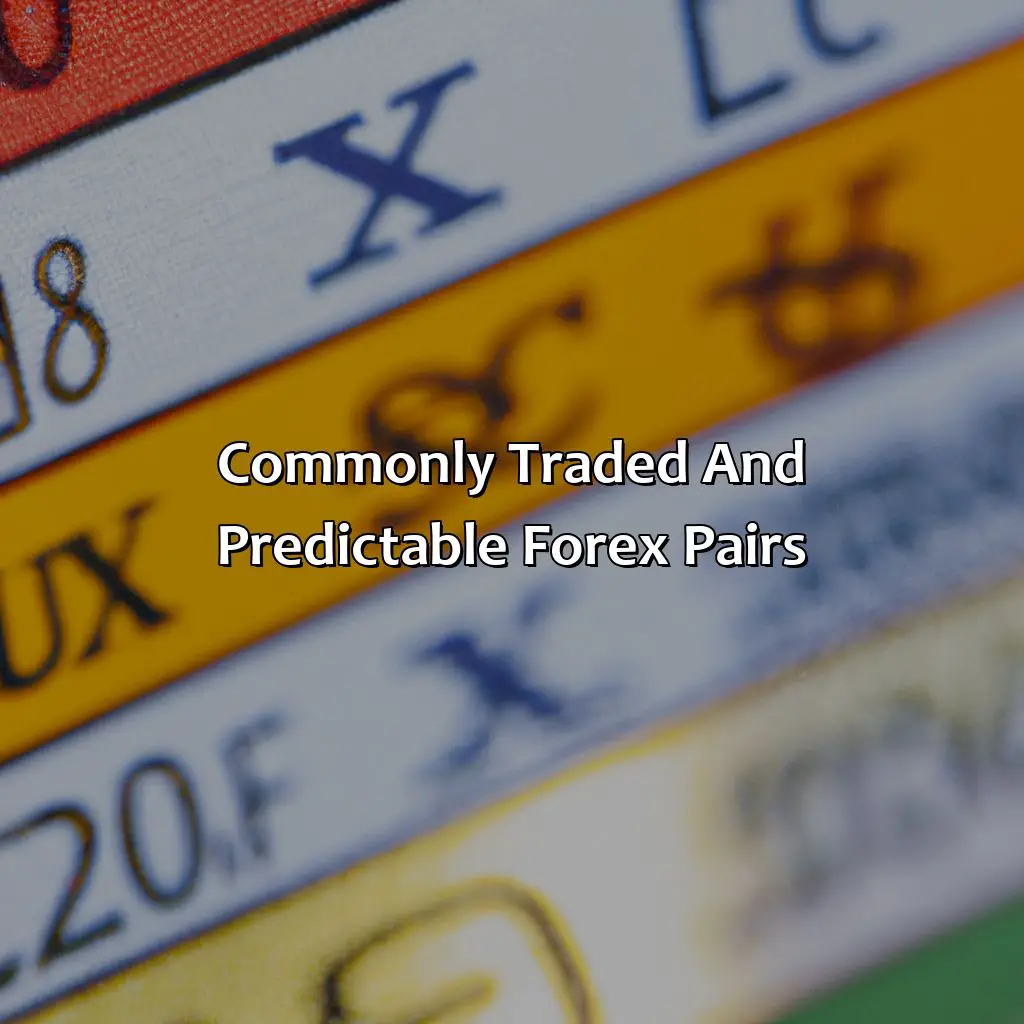
Photo Credits: forexbrokerreport.com by Jason Sanchez
Gain clarity on commonly traded forex pairs like EUR/USD, USD/JPY, GBP/USD, USD/CHF, and AUD/USD.
For EUR/USD, solutions focus on news, brokers, platforms, education, trading courses, and mentors.
USD/JPY‘s sub-section looks at forex spreads, bid and ask, leverage, automated trading, charts, and signals.
GBP/USD‘s sub-section focuses on technical indicators like Bollinger bands, stochastic oscillator, RSI, and MACD.
USD/CHF‘s sub-section highlights ADX, Fibonacci retracement, Elliott wave theory, and Ichimoku cloud.
AUD/USD has spread trading, position trading, swing trading, price action, and pip movement.
EUR/USD
Here is a table that shows details about the EUR/USD forex pair:
| Forex Pair | EUR/USD |
| Popular Timeframes | 15m, 30m, 1h, 4h, Daily |
| Pip Value (per standard lot) | $10 per pip |
| Average Spread | 0.6 pips on forex platforms by regulated forex brokers |
Amongst all forex pairs, EUR/USD has unique details like a popularity among traders owing to lower spreads and significant volatility despite being relatively stable. Forex news plays a significant role in determining changes in prices- making it an ideal fit for short-term trading.
Trading courses are available to learn strategies like trend following which involves monitoring moving averages or carry trading- taking advantage of interest rate differentials between currencies.
EUR/USD has experienced remarkable ups and downs over time. A true history revealed that back in the early ’90s’- this pair was not well-established amongst other popular pairs like USD/JPY and GBP/USD but soon became popular due to better historical forecasts based on market fundamentals.
Trading USD/JPY can be a rollercoaster ride, but with the right tools like forex spreads, bid and ask, leverage, and trading signals, it can be a profitable one.
USD/JPY
USD/JPY, also known as the dollar-yen pair, is a widely traded and highly liquid forex pair. It represents the exchange rate between the US dollar and the Japanese yen.
| USD/JPY | |
|---|---|
| Bid-Ask Spread | 0.003 |
| Average Daily Range | 0.47% |
| Pip Value per Standard Lot | $8.48 |
| Leverage | Up to 50:1 |
| Automated Trading Available? | Yes |
| Forex Charts Available? | Yes |
| Trading Signals Available? | Yes |
Despite its popularity, it has unique features that traders must consider in their trading strategies. With an average daily range of 0.47%, it provides traders with ample opportunities to profit from intraday price volatility. The bid-ask spread for USD/JPY is relatively low at 0.003 pips, making trading costs cheaper than some of its counterparts.
Traders must understand that even predictable currency pairs such as USD/JPY still carry risks such as sudden market fluctuations and geopolitical events. For instance, in March 2021, when Japan announced plans to limit international travel due to rising COVID-19 cases, the yen appreciated against the US dollar.
A professional trader explains that they prefer to use automated trading systems to trade USD/JPY due to its predictability and liquidity levels. However, successful trades are dependent on accurate analysis of economic indicators and factors affecting both economies’ currencies.
Finally, traders need extensive knowledge of forex spreads, bid and ask prices, leverage ratios and technical analysis techniques like forex charts and signals when trading USD/JPY or any other currency pairs actively.
Technical indicators are like an orchestra for trading, and GBP/USD’s Bollinger bands, stochastic oscillator, RSI, and MACD, all play a key role in the symphony.
GBP/USD
In the table below, you can see some key features about GBP/USD:
| Key Features | Details |
|---|---|
| Nickname | Cable |
| Symbol | GBP/USD |
| Trading Hours | 24 hours/day |
| Pip Value | $10 per pip |
| Lot Size | 100,000 units |
Unique details about GBP/USD include its high liquidity and popularity among traders due to its status as a major currency pair. It also tends to be influenced by geopolitical events such as Brexit negotiations and political uncertainty in the United States.
Don’t miss out on potential profits by ignoring predictable forex pairs like GBP/USD. By understanding market conditions and utilizing technical indicators, traders can take advantage of opportunities for profit while minimizing risks associated with volatility in this popular currency pair.
Trading USD/CHF is like playing Tic Tac Toe with the Fibonacci retracement, ADX and Elliott wave theory, while watching the Ichimoku cloud float by.
USD/CHF
In the table below, we list some essential details related to USD/CHF:
| Factors | Details |
|---|---|
| Major currencies involved | USD and CHF |
| Daily trading volume | $180 billion (approx.) |
| Main technical indicators used for analysis | ADX, Fibonacci retracement, Elliott wave theory, Ichimoku cloud |
| Influential economic events GDP release, central bank policy decisions, manufacturing PMI readings. |
Unique details of USD/CHF include its safe-haven status due to Switzerland’s political neutrality, lower trading costs compared to other pairs and tighter spreads. Traders often use USD/CHF as a hedge against riskier trades due to its correlation with other major currencies.
Pro Tip: While analyzing this pair can be fruitful for traders in terms of predictability and low volatility, be cautious about unexpected geopolitical or economic events that can disrupt the market at any moment.
Trading AUD/USD is like a rollercoaster ride with spread trading, position trading, swing trading and price action, but the pip movement is worth the thrill.
AUD/USD
The currency pair involving the Australian dollar and the United States dollar is a commonly traded and predictable forex pair. Traders can take advantage of its pip movement to earn profits by implementing various strategies such as spread trading, position trading, swing trading, and price action. In addition, technical and fundamental analyses can be conducted to determine the best time to enter or exit trades. However, it is important to note the risks involved in forex trading.
Trade like a pro by expanding your forex knowledge through glossaries, books, blogs, forums, podcasts, websites, communities, social media, events, and conferences on strategies for trading predictable forex pairs.
Strategies for trading predictable forex pairs

Photo Credits: forexbrokerreport.com by Thomas Hernandez
Enhance your trading strategy for the most predictable forex pairs by using resources. These include forex glossaries, books, blogs, forums, podcasts, websites, communities, social media, events, and conferences.
To optimize your approach, focus on four sub-sections:
- Trend Following
- Breakout Trading
- Carry Trading
- Scalping
Trend following
The approach of following trends in the forex market involves analyzing historical data to identify patterns and make predictions on potential movements. This strategy incorporates technical analysis tools, such as moving averages and trend lines, to determine entry and exit points for trades. By monitoring price action over a specified period, traders can capture profits from upward or downward trends.
Trend identification is the key focus of this strategy. Once established, traders follow the trend until it loses momentum and either reverses or ranges. This technique exposes traders to minimal trading risks as they enter positions with market sentiment, potentially reducing exposure to negative news events that might impact other strategies.
Incorporating support and resistance levels further enhances this strategy by analyzing past price behavior to predict future levels whereby buyers will appear in an uptrend along with sellers in case of a downtrend.
Traders should remain cautious since the market may change course suddenly due to unpredictable volatility. It is better to apply stop-loss orders while implementing this technique.
A successful forex trader utilized this technique: A well-known trader followed an uptrend using trend-following strategy by identifying breakouts above the 100-day moving average by focusing on consistent patterns in trading charts before taking long positions on EUR/USD pairs. The trades were held for several weeks but were closed upon identifying resistance followed by an imminent downtrend through technical analysis signals which helped avoid potential losses.
Breakout trading: because sometimes you have to break free to make a profit.
Breakout trading
To be successful in breakout trading, traders must have a solid understanding of market conditions and be able to react quickly to changes in price action. Timing is crucial, as breakouts can be short-lived and false signals can occur. Therefore, it is important to have strict risk management strategies in place and avoid chasing trades.
It is recommended that traders practice breakout trading on demo accounts before implementing the strategy with real money as it requires discipline and patience.
Pro Tip: Always use stop-loss orders when entering breakout trades to manage risk effectively.
Make sure your baggage is light before attempting carry trading in the unpredictable world of forex.
Carry trading
Carrying trades refers to a trading strategy where an investor borrows money in a low-interest-rate environment and invests it in high-yield assets. This strategy is based on the concept of interest rate differentials as investors earn profit from the difference between two currencies’ interest rates as well as appreciation of the exchange rate. Carry trading can generate significant returns over time, especially for long-term investors who are willing to hold positions for weeks or months. However, carry trades may also be subject to fluctuations and risks from sudden market movements or negative economic news, resulting in significant loss.
If you’re a fan of quick wins and high risk, then scalping may just be the hair-raising strategy for you.
Scalping
Traders who employ the scalping technique usually have smaller profit targets per trade and higher frequency of trading, executing multiple trades in a day. This strategy requires precision and discipline, as traders need to closely monitor the market and quickly execute their trades while minimizing risk.
In addition to monitoring short-term indicators like moving averages and momentum oscillators, scalpers may also use more advanced tools like order book analysis, tick charts, and time-sales data. This technique requires active management through tight stop-losses and quick exits when necessary.
While scalping can generate profits in short periods, it involves significant risks like high costs of trading due to frequent trades, slippage with fast-paced trades, and the possibility of whipsaw losses if not executed properly. As always, traders should manage their risks by using proper money management techniques.
True History: One notable instance of successful scalping took place in 2013 when a technology-driven hedge fund made $300 million in just two years by using high-frequency algorithms that enabled them to make thousands of trades per day. However, this success was followed by significant regulatory scrutiny into the ethics of high-frequency trading practices.
Forex trading is like walking on a tightrope over a never-ending pit of trading costs, currency exchange, currency hedging, and the fear of inaccurate forex analysis.
Risks involved in forex trading
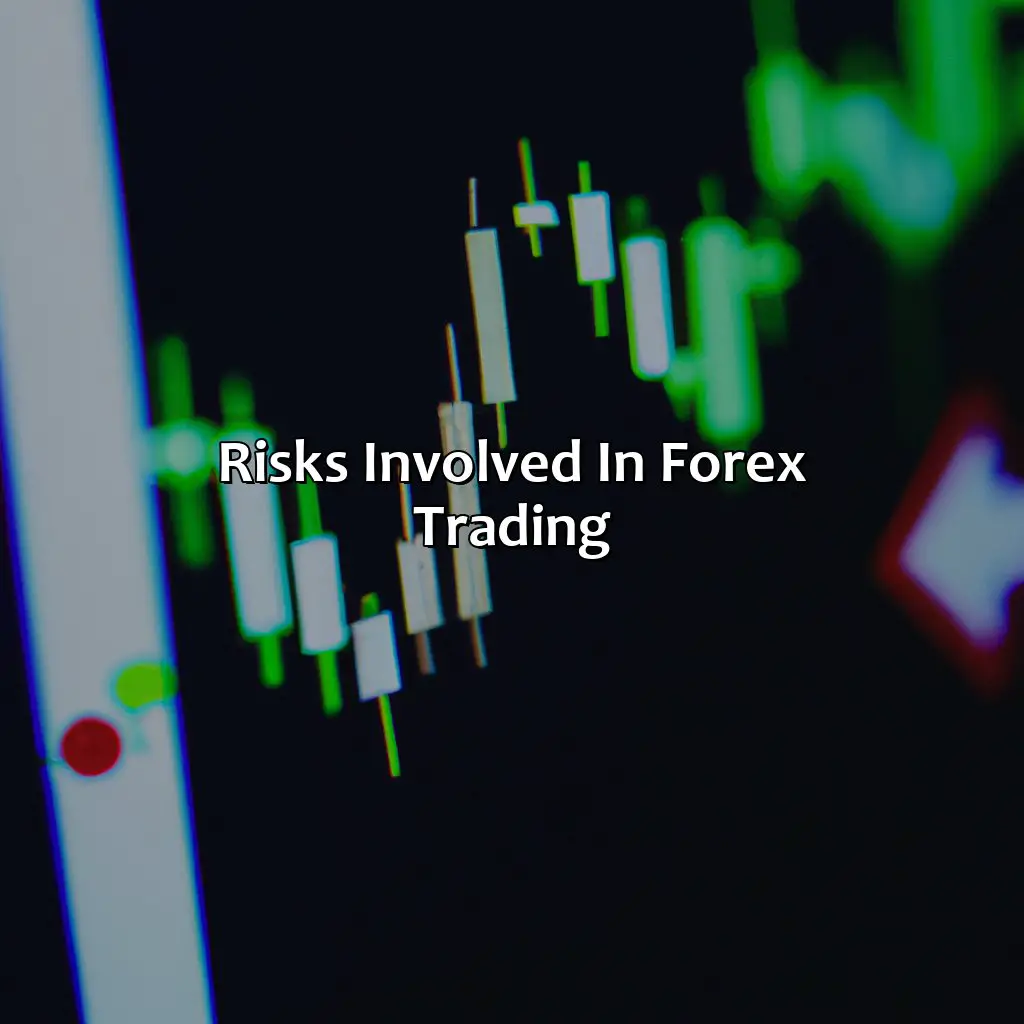
Photo Credits: forexbrokerreport.com by Keith Young
Forex Trading Risks: A Professional Explanation
Forex trading involves a range of risks that traders must understand before starting. These risks include:
- Market volatility
- Leverage
- Interest rate fluctuation
- Country risk
- Counterparty risk
Furthermore, to better manage these risks, traders must consider:
- Trading costs and currency exchange
- Currency hedging and forex analysis
These factors directly impact the profitability of a trade and should not be overlooked.
It’s important to note that a true understanding of these risks comes from experience rather than just theoretical knowledge. Consequently, novice traders should start with small amounts and manage risk effectively to mitigate negative consequences.
In a true history of forex trading, there have been many instances where traders made significant profits, but also many where they lost. The key takeaway is that knowing and managing risks is crucial for long-term success.
Five Facts About the Most Predictable Forex Pair:
- ✅ The USD/EUR pair is considered the most predictable forex pair by many traders and analysts. (Source: FXStreet)
- ✅ The predictability of the USD/EUR pair is due to the stable economic and political conditions of the United States and the European Union. (Source: DailyFX)
- ✅ The USD/EUR pair is heavily traded and accounts for a significant portion of the overall forex market. (Source: Investopedia)
- ✅ Many traders use technical analysis to predict future movements of the USD/EUR pair. (Source: Babypips)
- ✅ News events, such as economic releases and political developments, can also impact the predictability of the USD/EUR pair. (Source: FXCM)
FAQs about What Is The Most Predictable Forex Pair?
What is the most predictable forex pair?
The most predictable forex pair is considered to be the EUR/USD pair. It has a high trading volume, is widely followed by traders and analysts, and is influenced by a variety of economic and political factors.
What factors contribute to the predictability of a forex pair?
Factors that contribute to the predictability of a forex pair include economic indicators, central bank policy, political events, and market sentiment. Pair with high trading volume and global popularity also tend to be more predictable.
Why is predictability important in forex trading?
Predictability is essential in forex trading because it helps traders make informed decisions and manage risk. By analyzing market trends and predicting future price movements, traders can take positions that have a higher probability of success.
Can predictability change over time?
Yes, predictability can change over time as market conditions and economic factors shift. Traders must continually analyze and adjust their strategies to account for changes in the market environment.
What are some tools or strategies for predicting forex pair movements?
There are many tools and strategies available to help traders predict forex pair movements, including technical analysis, fundamental analysis, and sentiment analysis. It’s also essential to stay up-to-date with global economic and political news and events that may impact currency prices.
Is it possible to predict forex pair movements with 100% accuracy?
No, it’s not possible to predict forex pair movements with 100% accuracy. Markets are unpredictable, and there are always unexpected events or shocks that can cause prices to move in unexpected ways. It’s important to manage risk and always have a plan in place for the unexpected.


